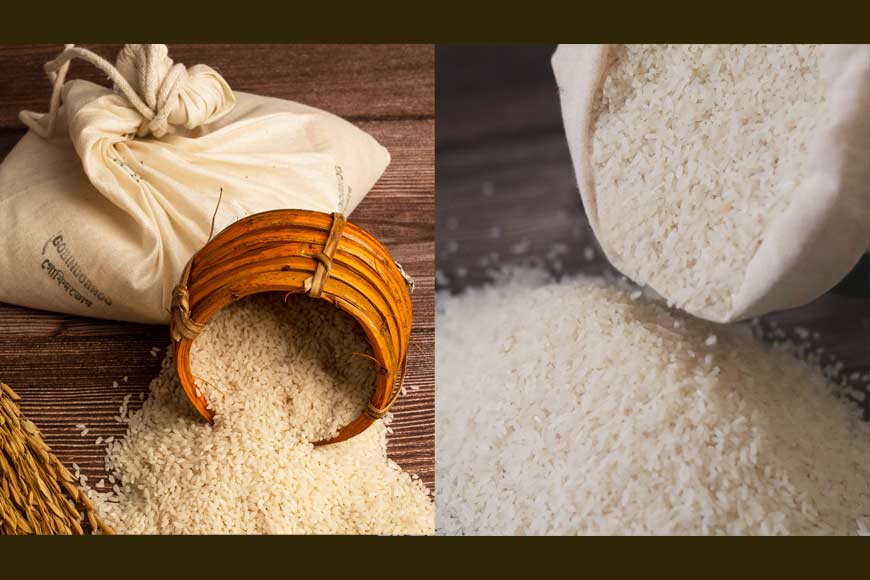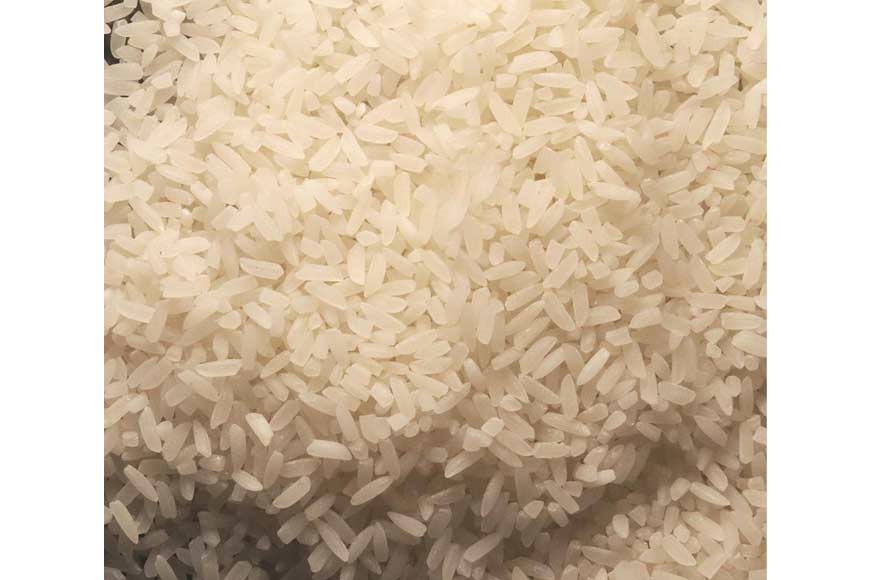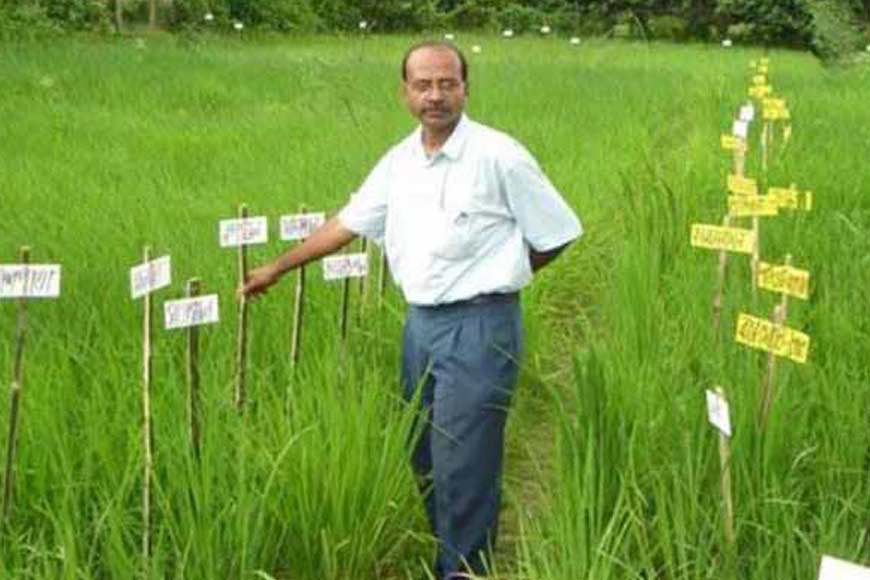Bengal’s Gobindobhog &Tulaipanji rice to get the global export grading tag like Basmati - GetBengal story

The very fragrance of Govindobhog is to die for.
It was a washout monsoon day in Kolkata with the streets flooded and most people bound home, schools declaring a rainy day, others working indoor. A specific aroma was sifting from the kitchen on such a cool day, touching the chords of the heart and it had to be the khichuri made out of the Govindobhog rice. It always reminds me of the childhood days, of mashed potato and ghee, of wintry dinners and the warmth of a happy family. Thus when I got to know that Bengal’s very own Govindobhog and Tulaipanji rice have been enlisted under a new export group called the ‘aromatic non-Basmati category’ under the ‘Grading and Marking Rule 2023,’ it only made me more proud and cherish such a news.
“This was long due, and though we celebrated Basmati rice with great pomp and show over decades all across the world, we had shown a step-motherly attitude towards Bengal’s Govindobhog and Tulaipanji rice,” said agriculture scientist Tarak Mandal. Gobindobhog and Tulaipanji have been used over years to prepare many well-known traditional Bengali recipes that became famous world-wide. Take for example Payesh, a famous Bengali dessert that cannot be thought with any other variety other than Gobindobhog. Similarly, Tulaipanji rice is used for pulao, biryani etc and is an excellent alternative to the Basmati. The name ‘Gobindobhog’ is derived from two words: ‘Gobindo,’ which is another name for Lord Krishna, and ‘Bhog,’ meaning offering or food.

Now coming to the characteristics of Gobindobhog rice. It’s short-grained aromatic variety. The grains are also plump, soft, and have a natural fragrance that sets them apart from other varieties. The rice has a creamy white colour and a slightly sweet flavour, making it a delightful addition to various culinary creations. This rice variety originated in East Burdwan’s Raina and Khandoghosh Blocks in West Bengal. Currently, it is cultivated in 7 districts of Bengal and around 80,000 farmers grow this rice in an area of over 65,000 hectares.
Tulaipanji is another indigenous aromatic rice of Bengal with medium-long slender grains. Its aroma lasts a year. It originated in Hemtabad, Kaliagunj and Raigunj Blocks of North Dinajpur. Now it is grown in both North and South Dinajpur districts. About 16,000 tonnes of this variety is produced every year.
For years, there was a demand for a separate category for the export of such indigenous categories of rice. The demands have been heard as a set of proposed rules for grading rice and will soon pave the way for a separate identity for five aromatic varieties from West Bengal and put them on the world map.
According to West Bengal Agriculture Marketing Department officials, the Centre is gearing to roll out a new export group called the ‘aromatic non-Basmati category’ under the ‘Grading and Marking Rule 2023’. Already, draft rules for the proposed category have been made and they are expected to be finalised in a few weeks. According to the agriculture marketing department, the state plans to export five indigenous aromatic rice varieties – Gobindobhog, Tulaipanji, Randhuni Pagol, Kataribhog and Kalonunia — under the proposed ‘aromatic non-Basmati category’.
 Anupam Paul, former Additional Director of Agriculture (P), Directorate of Agriculture, West Bengal
Anupam Paul, former Additional Director of Agriculture (P), Directorate of Agriculture, West Bengal
Anupam Paul, former Additional Director of Agriculture (P), Directorate of Agriculture, West Bengal, said, “In Europe, these aromatic small size rice varieties are called ‘baby Basmati’ and there are some supplies of them to the international market as well. With the upcoming introduction of a new export category known as the 'aromatic non-Basmati category' under the 'Grading and Marking Rule 2023,' these baby Basmati rice varieties will be marketed accordingly. But if these rice varieties have to be exported then the GI (Geographical Indication) tag issue comes in as Gobindobhog is cultivated in regions both with and without this designation. Should export-quality Gobindobhog rice be cultivated in a region lacking a Geographical Indication (GI) tag, it cannot be labelled as Gobindobhog.
Till now, Basmati is the only rice variety in India with a separate ‘Harmonised System Nomenclature (HSN)’ code for export purposes. The HSN code was introduced by the World Customs Organisation (WCO) in 1988 for the systematic classification of goods across the world. India has also adopted the system. It is widely believed that the indigenous rice varieties such as Gobindobhog, Tulaipanji, Radhatilak, RandhuniPagol, Kataribhog, Kalonunia, Badshabhog and Harinakhuri have export potential but as not a lot of people are aware of such varieties, they do not get the limelight that they deserve. Distinctive characteristics inherent to indigenous categories set them apart from Basmati rice. Establishing a separate identity for these varieties has the potential to enhance their export opportunities, thereby providing advantages to farmers in West Bengal. Not only the farmers of Bengal but other regions will also benefit from it because almost every rice-producing state of India has its own indigenous aromatic rice variety which is not the same as Basmati.
“Exporting baby Basmati rice requires consideration of the importing country's specifications, particularly concerning permissible levels of pesticide and fertilizer residue. The testing of samples from the produce will prioritize the examination of these parameters in accordance with the import requirements of the destination country. At times, farmers may cultivate these rice grains organically, but there is a risk of fertilizers washing in from adjacent fields. In 2013, an organization from Burdwan took the initiative to export Badshabhog and Gobindobhog rice. However, when rice samples were tested from a farmer who had cultivated them organically, pesticide and fertilizer residue was detected due to runoff from an adjacent field. Consequently, once an area is identified as contaminated, aromatic rice cannot be sourced from there any longer. The produce must adhere to the permissible residue limits as outlined in the guidelines.
However, this recognition of our indigenous variety of rice, making them qualify for the export grade, is a big step forward and one can only hope that more and more farmers would now show interest to cultivate these varieties.











